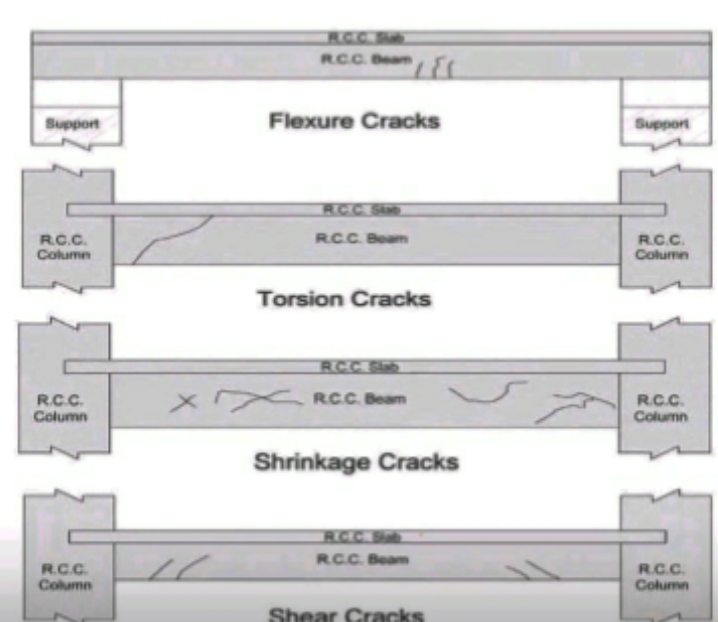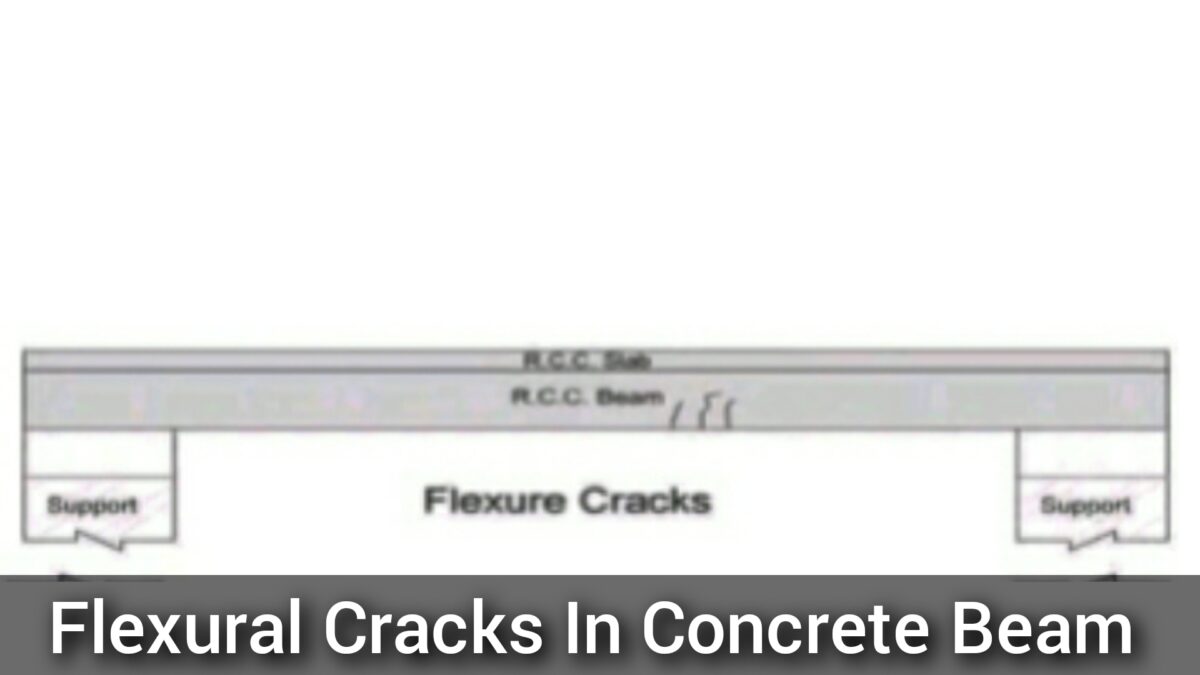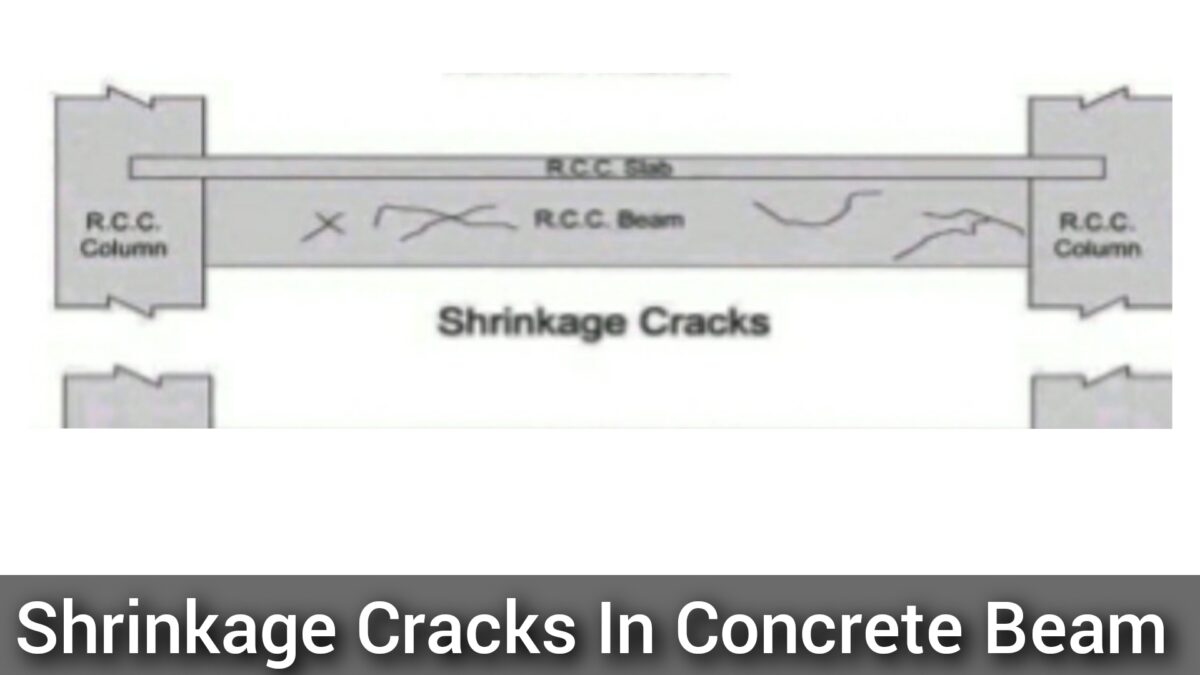Table of Contents
Cracks In Concrete Beam: Introduction
This article explains four common types of cracks that can develop in concrete beam: flexural cracks, torsional cracks, shrinkage cracks, and shear cracks.

Engineers and construction professionals must have a comprehensive understanding of the various types of cracks that can occur in concrete beams to ensure the structural integrity and long-term durability of these essential components in the construction industry. External forces can cause concrete beams to crack, making it crucial to promptly identify and address these cracks. Implementing appropriate measures will help maintain the strength and stability of concrete beams in diverse applications.
4 types of Of cracks in concrete beams are discussed:
1. Flexural Cracks:
Flexural cracks occur in concrete beams when tensile stresses exceed the material’s capacity to resist them, resulting in visible cracks on the tension side of the beam.

Causes:
Flexural cracks can be caused by various factors, including overloading of the beam beyond its design capacity, inadequate reinforcement, poor construction techniques, or lack of support conditions.
Repair:
The repair of flexural cracks involves identifying and addressing the underlying cause. The cracks can be repaired by injecting epoxy or polyurethane resins into the cracks to restore the structural integrity. Additionally, reinforcing bars or carbon fiber reinforced polymers (CFRP) can be added to reinforce the beam and prevent further cracking.
2. Torsional Cracks:
Description: Torsional cracks develop in concrete beams subjected to excessive twisting forces, resulting in cracks that spiral around the beam’s circumference.

Causes:
Torsional cracks can be caused by irregular loading patterns, inadequate torsional reinforcement, improper construction techniques, or lack of proper structural design to resist torsional forces.
Repair:
Repairing torsional cracks typically involves addressing the underlying causes. This may involve retrofitting the beam with additional reinforcement, such as helical reinforcement or shear reinforcement, to enhance its torsional resistance. In severe cases, it may be necessary to consider structural modifications or strengthening measures, such as adding external post-tensioning tendons.
3. Shrinkage Cracks:
Shrinkage cracks are caused by the natural drying and shrinking process of concrete, resulting in small, hairline cracks that generally occur at regular intervals.

Causes:
Shrinkage cracks occur due to the inherent properties of concrete, as it undergoes hydration and subsequent drying. Factors such as high water-cement ratio, insufficient curing, and rapid drying conditions can exacerbate shrinkage and lead to more pronounced cracks.
Repair:
Shrinkage cracks are typically superficial and do not significantly affect the structural integrity. They can be repaired by filling the cracks with appropriate sealants, such as epoxy or acrylic-based crack fillers. If the cracks are wider or deeper, they may require routing and filling with suitable repair materials.
4. Shear Cracks:
Shear cracks occur in concrete beams when the applied shear forces exceed the beam’s capacity to resist them, resulting in diagonal cracks typically inclined at a 45-degree angle.

Causes:
Shear cracks can be caused by excessive loads, inadequate shear reinforcement, insufficient concrete strength, or improper structural design.
Repair:
Repairing shear cracks involves addressing the root causes. This may include adding shear reinforcement such as stirrups or inclined bars to enhance the beam’s shear resistance. Epoxy injection or grouting may be used to fill and stabilize the cracks, followed by strengthening measures if necessary, such as external post-tensioning or fiber-reinforced polymer (FRP) wrapping.
Sum Up
It’s important to note that the repair methods may vary depending on the severity and extent of the cracks, as well as the specific recommendations of structural engineers or professionals overseeing the repair process.
Faqs
Cracks can appear in concrete beams because of things like heavy weight on top, changes in temperature, or when the concrete is not made properly.
When it gets hot, the concrete expands and may crack. When it gets cold, the concrete shrinks and may also crack.
Not all cracks mean the beam is broken. Some cracks are not a big problem, but some can be serious and need to be fixed.
There are different types of cracks in concrete beams. Some happen when the beam bends too much, some when it’s not strong enough, and some when the concrete dries and shrinks.
To stop cracks, we need to make sure we use the right materials, put in enough support inside the concrete, let it dry slowly, and make sure it doesn’t shrink too much.
Yes, cracks in concrete beams can be fixed. Sometimes we use special glue to fill in the cracks. If the cracks are big, we might need to use strong materials to fix them.
If we don’t fix the cracks, they can get bigger and make the beam weaker. It might not be able to hold things up properly and could even break.
Sometimes cracks in concrete beams can mean there is a problem with the ground below. The ground may move or sink, and that can make the beams crack. It’s important to check if there’s a problem with the ground.
Yes, new concrete beams can have small cracks. These cracks happen when the concrete is drying, and they are usually not a big problem as long as they are not too big or make the beam weak.
Yes, it’s a good idea to ask an engineer if we see cracks in concrete beams. They can look at the cracks and tell us if they are a problem or if they need to be fixed.
